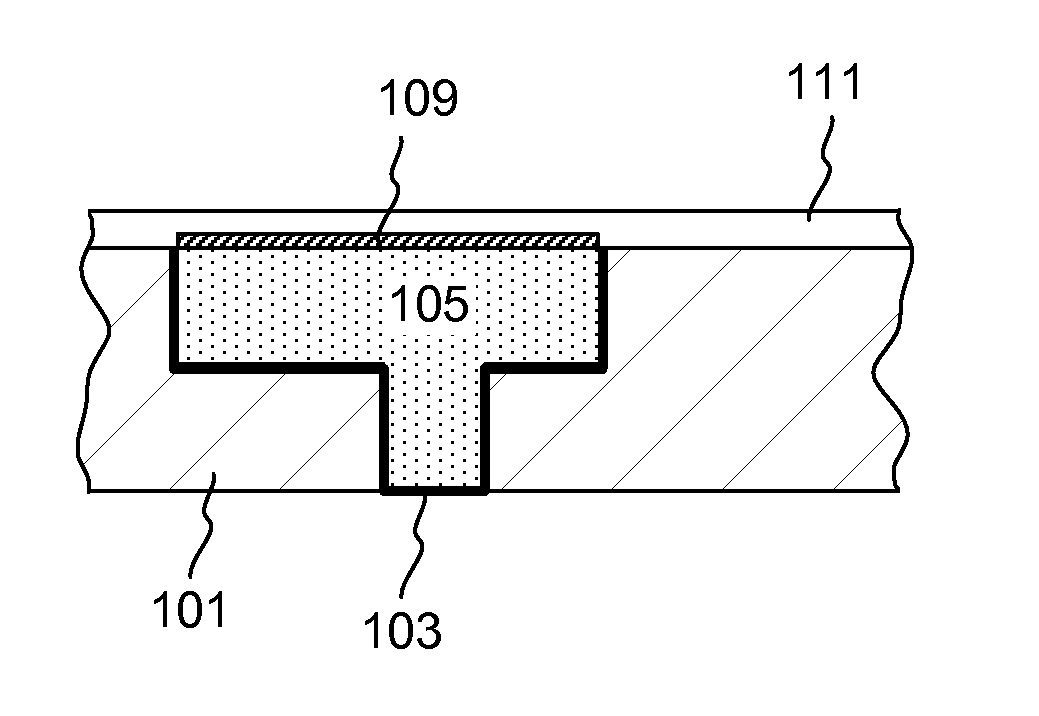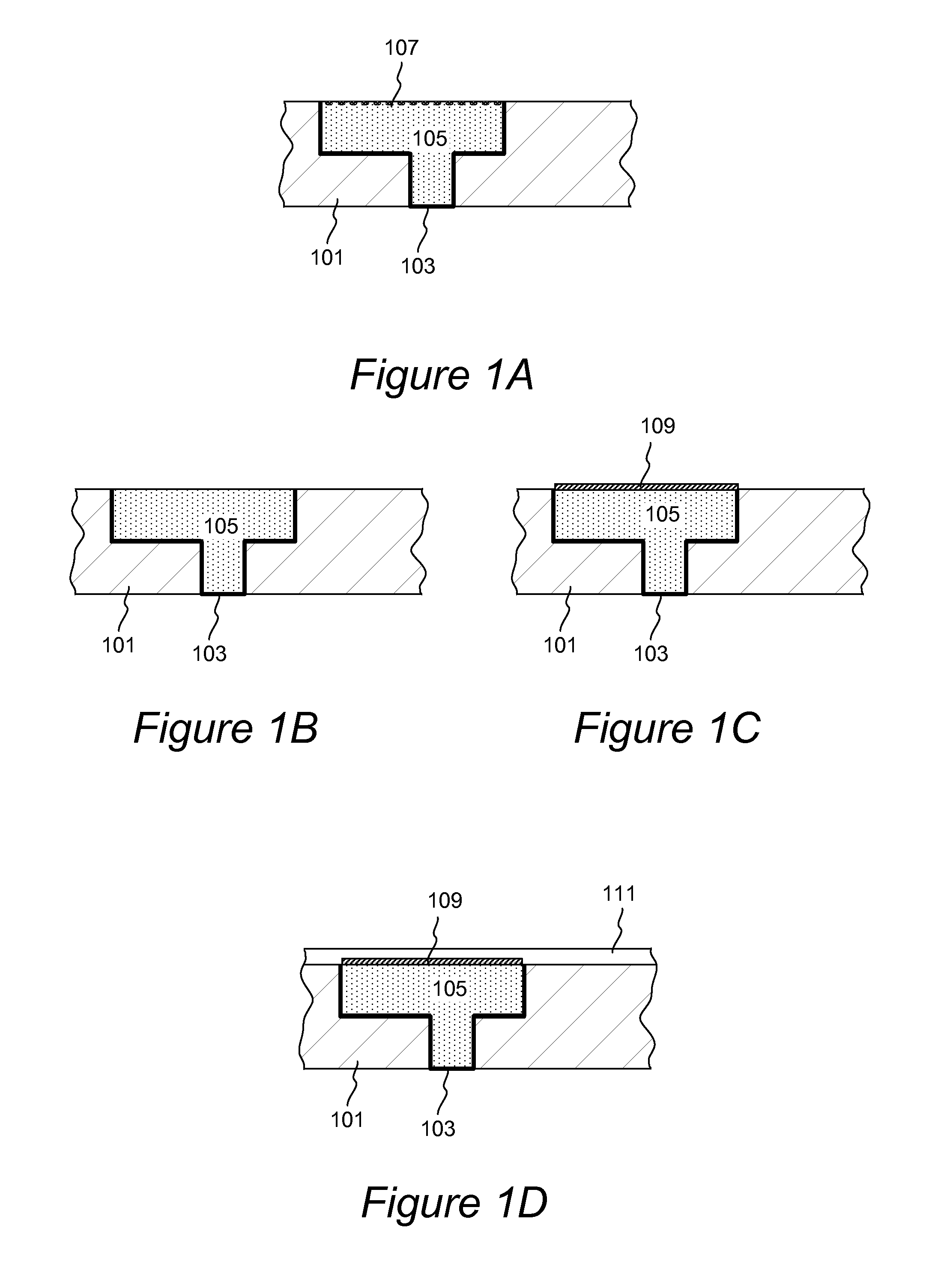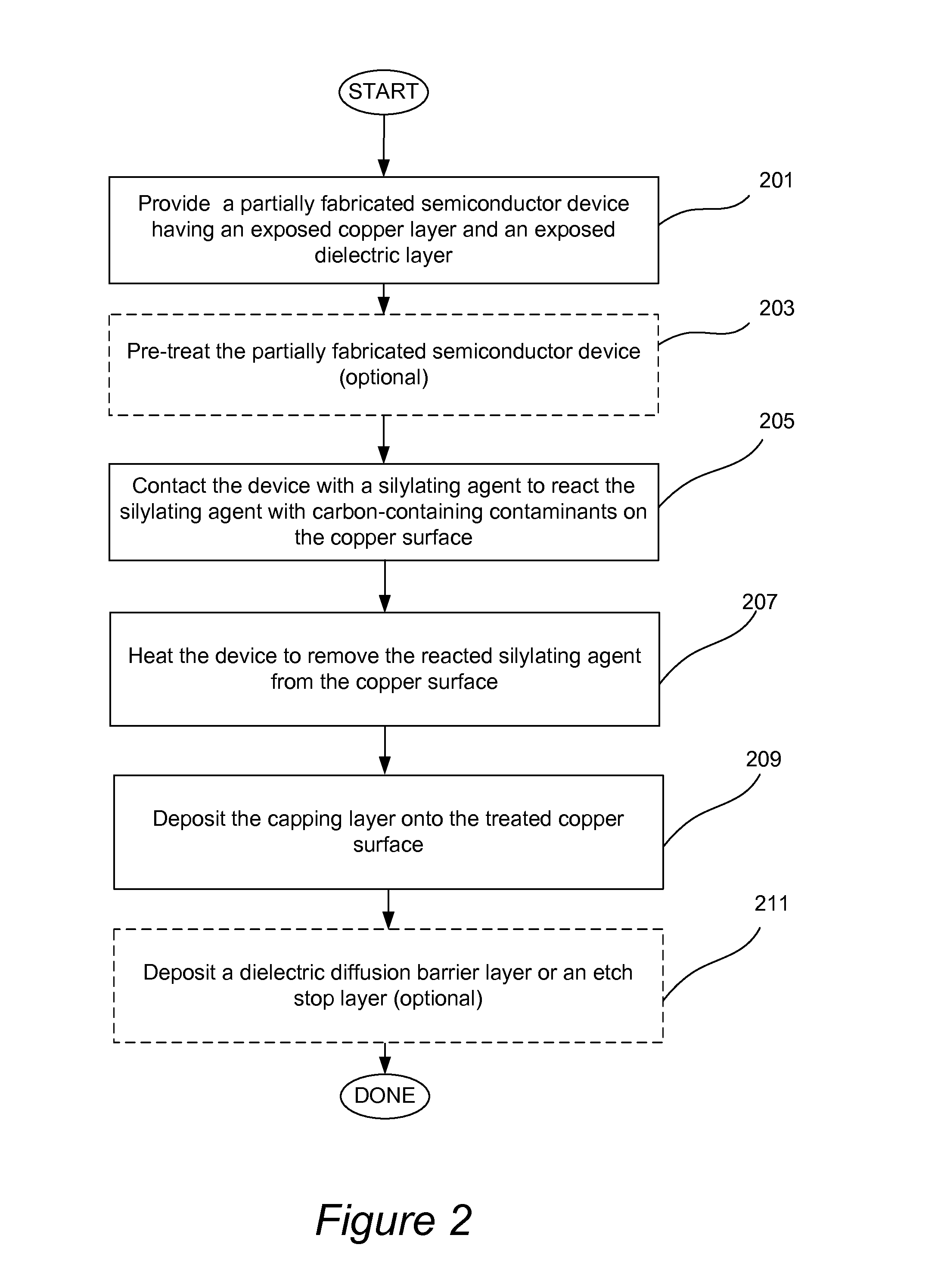Cleaning of carbon-based contaminants in metal interconnects for interconnect capping applications
- Summary
- Abstract
- Description
- Claims
- Application Information
AI Technical Summary
Benefits of technology
Problems solved by technology
Method used
Image
Examples
experimental examples
Example 1
[0053]X-Ray Photoelectron spectroscopic (XPS) data was obtained on thin copper films deposited and processed by different methods. FIG. 4A shows XPS data for a thin copper film deposited by electroplating and planarized by CMP. Two peaks assigned to carbon-containing contaminants were observed in this sample: a peak at about 289 eV is assigned to a carbon-oxygen (carbonate) bonding and a peak at about 285 eV assigned to C—C or C—H bonding. FIG. 4B shows XPS data for a thin copper film deposited by PVD that was not subjected to subsequent CMP treatment. Two peaks assigned to carbon-containing contaminants were also observed in this sample: a peak at about 289 eV is assigned to a carbon-oxygen (carbonyl) bonding and a peak at about 285 eV assigned to C—C or C—H bonding. Both graphs refer to C1s XPS data. These data illustrate that carbon-containing contaminants are present on copper layer deposited by different methods, and are not limited to contamination derived from chemic...
example 2
[0054]Carbon and silicon content was measured by XPS (using integrated areas of C1s and Si2p peaks respectively) in different samples of copper layers treated with a silylating agent under different conditions. Graph shown in FIG. 5 illustrates dependence of silicon content (y-axis) on total carbon content (x-axis). Two series of data were obtained. The series shown in diamonds refers to the samples of electrodeposited CMP-treated copper. The series shown in squares refers to the samples of PVD-deposited copper that was not planarized by CMP. It can be seen that in both series the carbon and silicon content are positively correlated, suggesting a binding between the carbon-containing contaminants and the silylation agent.
example 3
[0055]XPS data for carbon (C1s) were obtained on a sample containing a copper layer before and after treatment with a silylating agent, where the treatment included heating to remove the reacted silylating agent. The intensity of peaks at about 285 eV and 289 eV was substantially reduced.
PUM
| Property | Measurement | Unit |
|---|---|---|
| Temperature | aaaaa | aaaaa |
| Temperature | aaaaa | aaaaa |
| Pressure | aaaaa | aaaaa |
Abstract
Description
Claims
Application Information
 Login to View More
Login to View More - R&D
- Intellectual Property
- Life Sciences
- Materials
- Tech Scout
- Unparalleled Data Quality
- Higher Quality Content
- 60% Fewer Hallucinations
Browse by: Latest US Patents, China's latest patents, Technical Efficacy Thesaurus, Application Domain, Technology Topic, Popular Technical Reports.
© 2025 PatSnap. All rights reserved.Legal|Privacy policy|Modern Slavery Act Transparency Statement|Sitemap|About US| Contact US: help@patsnap.com



